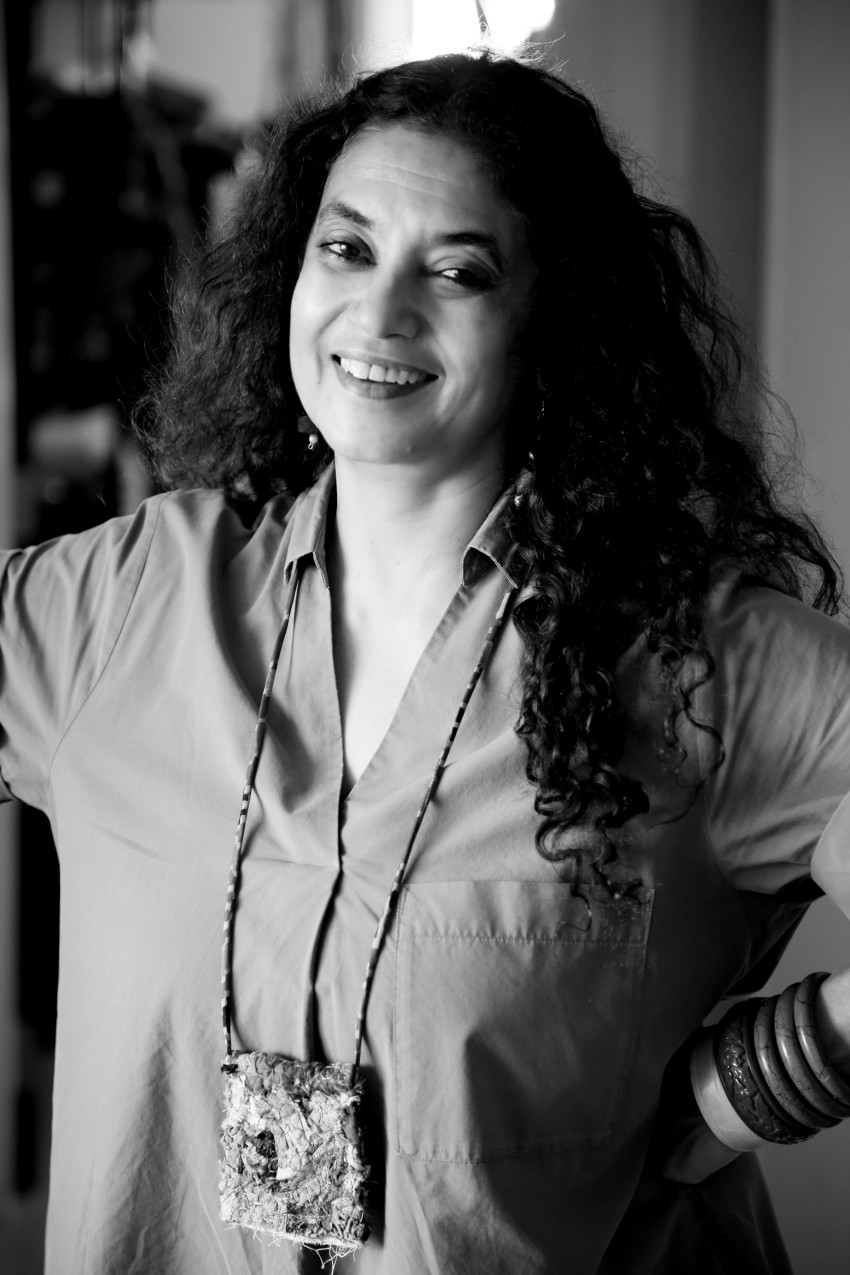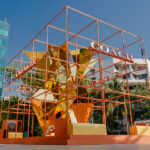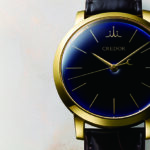Srila Chatterjee is a dynamic creative force who has nurtured her many talents across the spheres of cinema, advertising, design and fashion over the past 25 years, emerging as one of the most prominent names in India’s art and design circuit. She is the co-founder and curator at the iconic BARO store, a haven for intelligently designed crafts-based furniture and home interiors in Mumbai. She is also the founder of BARO MARKET, a digital platform for modern lifestyle, fashion, art and decor products that are distinctively Indian in essence and aesthetic. Her passion and appreciation for art, and her belief in the power of storytelling, informs the eclectic and mindfully curated selection of unique treasures at Baro Market. In this discussion, she shares her perspective on building an e-commerce brand, investing in art, and engaging the Indian consumer.
BARO MARKET places the spotlight on crafts persons, designers and artists from across India; communities that have been deeply impacted during the pandemic. What vision guides the brand to patronise local crafts and communities?
Our vision comes from our origins in the store BARO, and before that, in everything I have loved and learnt, so it is not pandemic-related at all; even though BARO MARKET was born right at the heart of it. I do not really like the word ‘patronise’, it does not give you a sense of the real passion and joy involved in our relationships with the small brands and craftsmen we love. It is hard to feel like that about something that is nameless and faceless and comes off a conveyor belt. Actually knowing the stories behind everything and knowing the people who created them is both exciting and inspiring, and being a part of that makes our own journey so much more worth it. It becomes symbiotic: we each contribute to the other. At the core of it, our vision is a world that embraces and values the richness of everything that is local, so that we are a truly heterogenous, exciting planet that never stops adding value.
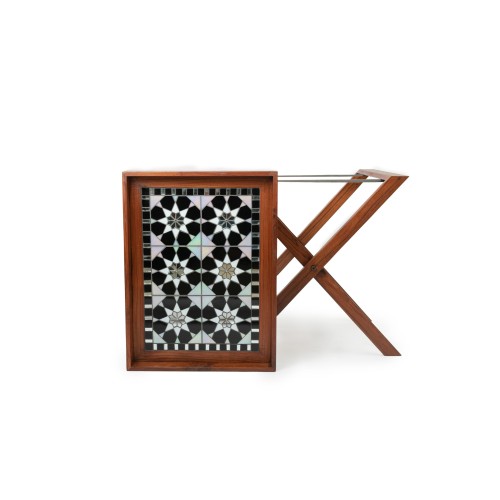
Night Sky: a stand and tray built from reclaimed teak wood in collaboration with artist Shilpa Dalal, available at BARO MARKET.
One of the most remarkable aspects of your work is the belief that stories lie at the heart of products. Can you elaborate on this ideology and how it informs the brand’s operations?
For me, stories are everything. They are what make things distinctive and singular, and not just another product off just another shelf. Stories take the focus off of something as being a material object and turn it into a part of a person’s life and being. There will always be a material aspect to all acquisition, there will always be the debate about whether something is really necessary, and most things are not, and acquiring is a human folly! However, if we are going to keep getting and acquiring, isn’t being truly connected to what you get a far better and more meaningful way to justify that? At BARO MARKET, while our business may be to sell, what we truly want to do is also to have the whole community grow and flourish and be independent. We want everyone who comes to us to actually meet the people who made or painted or wove, and to hear their stories; if more of that happened everywhere, we could actually change economic polarisation and inequity, and make a community of depth – not just of televised serials and the same-old ‘stars’!
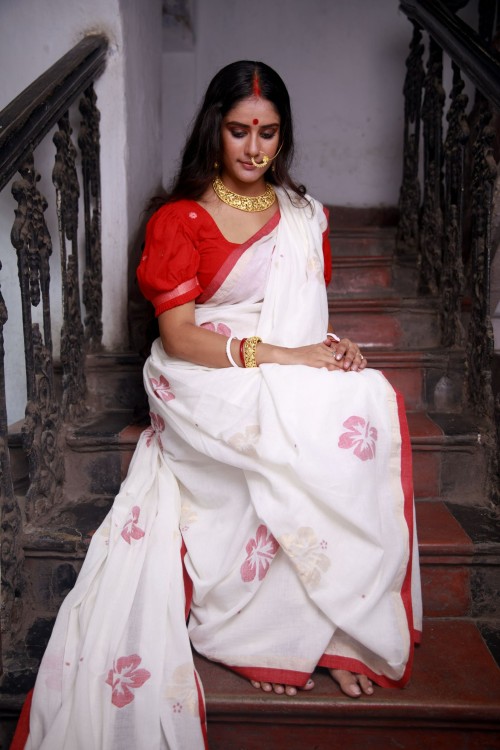
Anahita: a white joba sari by Bhomra Design Co, handwoven in West Bengal, available at BARO MARKET.
Is it challenging to present offerings that are relevant to the modern consumer, but still rooted in Indian design practices? What is the philosophy behind the curatorial process?
Honestly, it gets less and less challenging as more accomplished designers collaborate with skilled artisans to reinterpret traditional practices and make them exciting and relevant to current living. Indian design practice is based on very practical thought, so often going back to the origins is the best design! Our philosophy is deeply rooted in ‘local’ being the only true sustainable way of life, and if we interpret that in every way possible, we would all be in a much better place. It also makes travel so much more exciting if everywhere one went, one discovered new things that were local to the place, instead of having everything everywhere in a global mishmash, which does not help anyone except the Super Rich and Already Powerful!
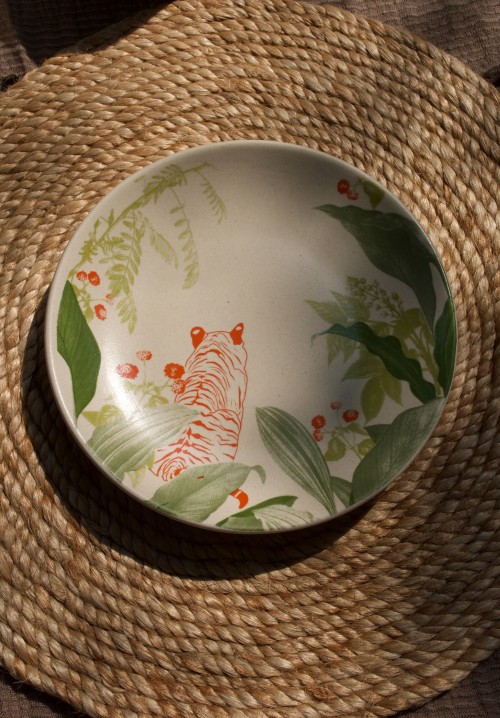
Paaro-Lantana Appetiser Plates by White Hill Studio, available at BARO MARKET.
High concept art is often considered inaccessible, but BARO MARKET breaks those barriers with its affordable and versatile selection. Do you think e-commerce can democratise art, carrying it beyond galleries and shows that may only be attended by esoteric audiences?
Yes, e-commerce is a big equaliser. However, I would always caution that it has limitations, and should always be thought of as the boon it is to accessibility and not an end in itself, certainly not for things that need a touch-and-feel experience. We have all our art online, but the biggest impact is in a live show. I would never be as passionate as I am about art as a ‘thing’ if I had not spent years and years just enchanted by the art I had experienced first-hand and loved so much that I actually wanted to transport it into my everyday, to add to my personal joy, and so it found its way to my walls or shelves.
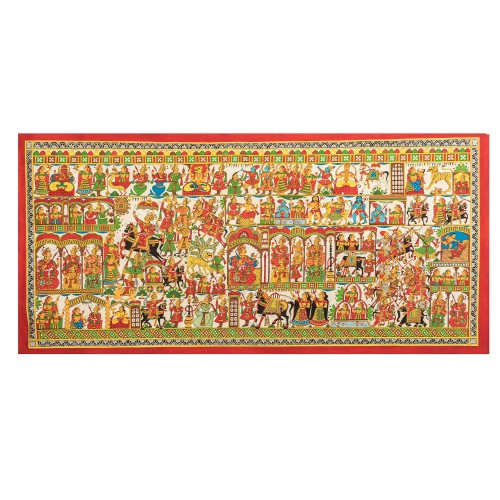
Kalyan Joshi, Phad: Story of Pabuji
A traditional Phad painting based on the life of Pabuji, a Rajasthani folk hero. The painting is available at BARO Market.
Investing in art is a personal and life-long journey. What would you say to someone who is beginning the journey of building a collection?
I would say two things. One, never think of art as an investment. Art must be something that moves you in a way that is personal, that only you feel. Two, keep one rule: when you really love something, ask one question only—do I want to pay the price asked? If the answer is yes, take it. It will find its place in your life, even if at that moment you have no idea where. Cross your fingers and hope like hell that you also know where you can store it!
What would your advice be to designers and artists who are trying to build their brand and reach consumers? How can they communicate the value of their art?
Concentrate on being authentic and true to what you believe, and then find a place that is also authentic and will help you tell your story; that is how the value will be communicated. Take small steps, do not be in a hurry to grow big. It is the first steps that will make all the difference.

